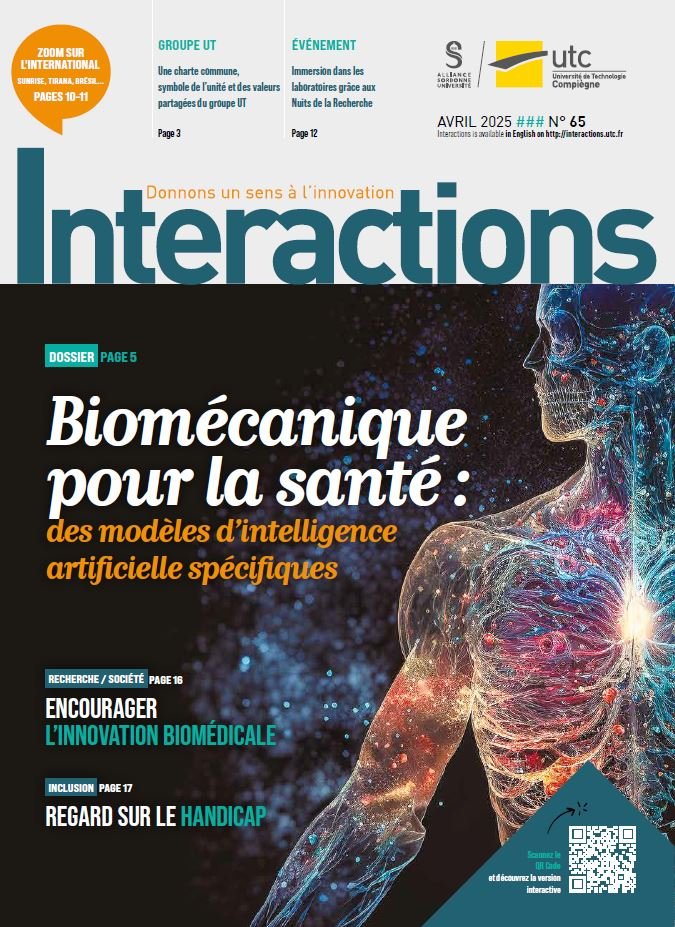Encouraging Biomedical Innovation

UTC’s Biomedical Rendez-vous took place on January 24, 2025 at the UTC Daniel Thomas Innovation Centre. The theme of the 7th edition was high-risk pregnancies and neonatal care. This event, which has become a “must”, aims to maintain a strong link between students in training and the entire biomedical community: industrial partners, health establishments and academic research scientists and engineers.
UTC’s Biomedical Rendez-vous gives everyone the opportunity to discuss the latest technological and organisational innovations and current research projects. It also pursues the UTC’s original positioning by questioning the changes brought about in particular by the human sciences: ethical questions, historical perspective, adaptable rights and the place of regulation. Lastly, it highlights student initiatives and the project-based teaching method so dear to UTC by including a poster session to present the work. ‘The quality of the plenary sessions on a difficult subject, high-risk pregnancies and prematurity, was strikingly high and enabled a wide audience to understand the issues and the impact of innovations on patient care, as well as the difficulty for the medical profession, not having all the answers despite the power and constant evolution of the tools available to them. Finally, the round-table discussions also highlighted the changing place of the new-born baby in our Society, the historical weight of religions and the constant need to strike a balance between human input and a techno-centric vision of patient care’, say Isabelle Claude and Jean-Matthieu Prot, lecturer-research scientists at the UTC-CNRS-BMBI laboratory, who defined this theme during a discussion with the organising committee, which includes scientific leaders and students. ‘We’re trying to strike the right balance between the various players and the subjects that are topical in the sector. The richness of the field offers a wide choice of issues to tackle and often sparks lively debate’.
An eagerly awaited event
The UTC-CNRS-BMBI laboratory is the first financial supporter of each edition of the UTC Biomedical Rendezvous, which enables its researchers to be highlighted. ‘It covers such a wide range of skills and themes that each year we can easily associate a field of research with the chosen theme,’ says thematic curator Isabelle Claude, lecturer-cum-research scientist at UTC. Among the sources of satisfaction are the involvement of students in the running of the day and the practical workshops organised with the UTC’s industrial partners, such as this year’s contribution of simulation tools to staff training by the company Laerdal, which offers an amazing and “bluffing” degree of realism. Jean-Mathieu Prot, likewise thematic curator and a lecturercum- research scientist at UTC, concludes: ‘The loyalty of our audience is another indication of the value of such an event, because we have set up a meeting place and many people follow us from a distance, we receive proposals for presentations or contacts from future students who are passionate about the subjects covered. The undeniable success of this great event is now being taken up by other flagship themes at the UTC, such as the RDV de l’IA!’
Innovation at the service of newborn babies
During the round table on innovation at the service of newborn babies, which brought together Nathalie Sage-Pranchere, historian at the CNRS, Jean-Luc Vanhee, former R&D Director of Mediprema and Catherine Marque, Emeritus Professor at the BMBI laboratory, Professor Laurent Salomon, gynaecologist and obstetrician at the Hôpital Necker-enfants malades, talked about ultrasonics which remains the main tool for monitoring pregnancy, and which has made considerable progress with the constant improvement in image quality and the emergence of technologies such as 3D/4D ultrasound and advanced Doppler imaging. ‘Today, it allows ever finer visualisation of foetal structures, facilitating early detection of anomalies. However, foetal MRI is taking on an important role, complementing (rather than replacing) ultrasonics, offering higher contrast resolution for certain cerebral, thoracic or abdominal pathologies, providing a functional approach to organs and overcoming certain technical limitations of ultrasonic imaging’, explains the specialist, for whom the emergence of techniques such as functional imaging opens up new prospects in the assessment of the placenta and foetal cerebral activity. ‘This could have a major impact on our understanding and management of growth disorders and neurological development from life in utero.
KD




